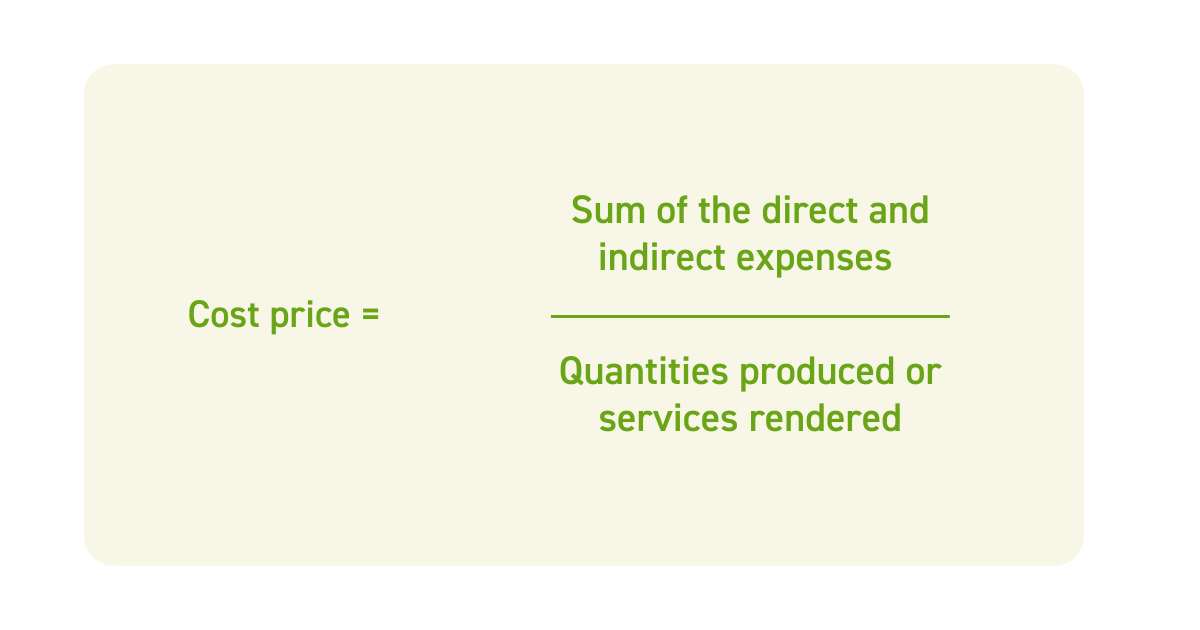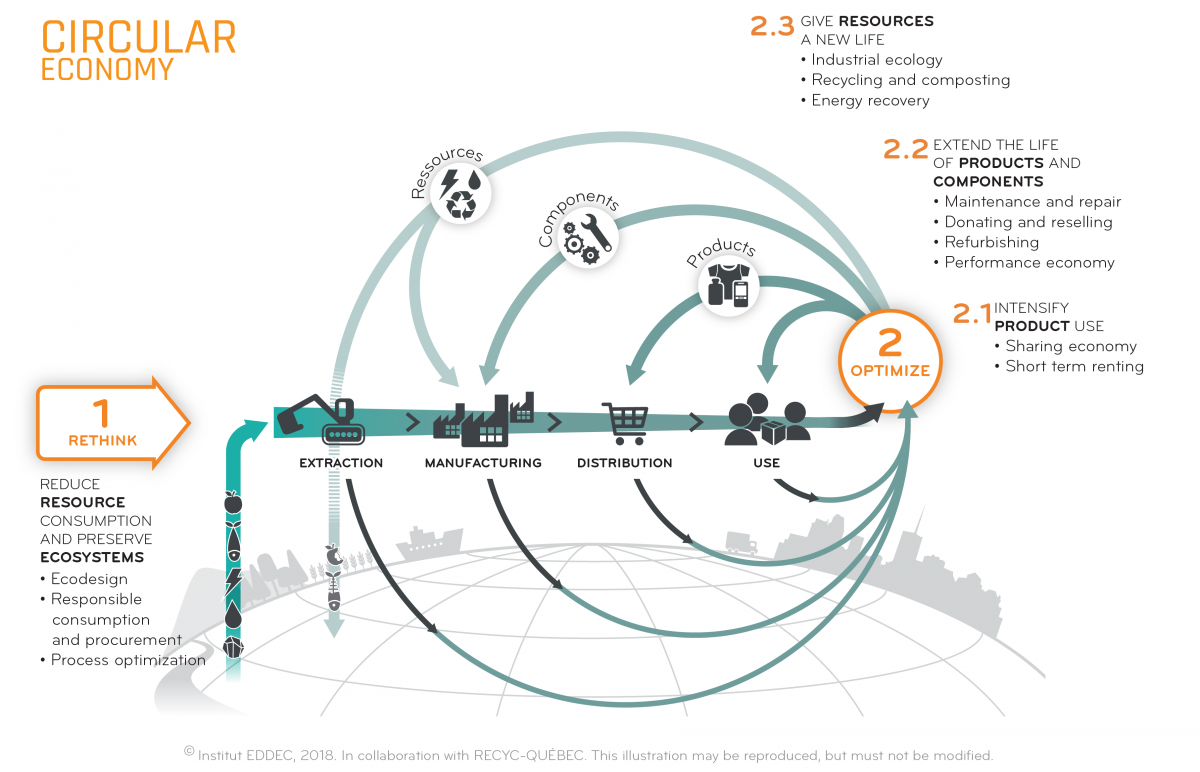Transferring a business is no easy task. Here are some tools to help you prepare for the sale of your business.
Tools to prepare for the sale of a business










As a business, association or organization, Google Business Profile is a must-have tool for you. Google listings are now becoming a central, even essential element for your visibility. They allow you to share your information, but it is also a free tool that highlights your activities, products or services that benefit from Google visibility.
Google Business Profile is a complementary support to your website which has many advantages:
It will also allow you to:
With your free business profile, you will be able to post photos and offers to show what makes you different, but above all, give reasons to your customers to choose you every time!
It will be the business listings that will be presented by Google that will appear first. You may find yourself, but your information is wrong (location, opening hours, photos, description, comments). You just might not exist! The file is to be created. This Google listing will be the first to come out, so your business must have its up-to-date listing. Your customers will use this information to continue their research, make calls or visits. Being connected to web users is essential today. Regardless of the size of your business, the benefits are important for your proper development.
Google Business Profile will allow you to:
Google Business Profile displays information related to your business and puts your potential and current customers in direct contact with your business. It increases your visibility in order to retain your customers. Here is a tool to use without any moderation.



For a small business owner looking to retire or simply change jobs, finding a buyer is challenging, especially in a regions. In general, transmission projects are confidential, to avoid destabilizing employees and weakening customers. Since few sellers announce their desire to sell with great fanfare, how can a rapprochement with potential buyers be envisaged and a successful succession take place? Follow these steps to publicize your transfer offer gradually and discreetly.
As mentioned above, finding a buyer for your business can be a challenge, business succession cannot be improvised! Between the moment when you think of selling your business and the moment when the transition will be official, several years may pass. Planning your departure in advance is therefore an excellent way to ensure the retirement you want.
Take the time to define your goals. Do you want to sell your business quickly or in several years? Do you plan to cease all activity or to pass the torch gradually while remaining active in the company? Do you want to sell to the competition or preserve the independence of your business? The answers to these questions will allow you to identify the buyer profile to seek.
Taking the necessary time to draw up a solid business succession plan will also allow you to test the waters around you, since it is essential to communicate your intentions and check the interest of the next generation. Start talking about your project to your relatives, your current employees, some of your clients, your professional network, etc. Perhaps the idea of taking up the torch will make its way to one of them to offer you the perfect match.
Finally, start delegating some tasks to empower your staff and focus on executing your plan.
The profile of your future buyer is already beginning to take shape among different types:
Regardless of the profile of the buyer for your business, they will arrive with their own roadmap, experience, personality and vision of things. They will be different from you, so do not bother looking for a clone of yourself! It is best to refine the search criteria and stick to the essential skills or abilities that they must have (customer relations, market knowledge, know-how) for better targeting.
To find a good candidate, mobilize your close personal and professional networks first: family, friends, customers, even suppliers. To increase the chances of finding a buyer, it is wise for a transferor to widen his circle by frequenting networks of local entrepreneurs.
The best door to knock on? The SADC and CAE consultants near you are important allies who know the local market better than anyone. Their networks, their partnerships and their exchanges under cover of confidentiality often lead to the discovery of potential buyers.
In addition to the transferor himself, loved ones, employees and partners will certainly go through a range of emotion and a lot of stress during the process. A key aspect of your business succession plan that should not be overlooked is the human aspect behind the process. Consider in advance each of these human factors vis-à-vis different stakeholders:
Buyer:
Employees :
Yourself :
You have worked for many years to bring your project to where it is today, so surrounding yourself with a good team is essential for a successful transmission. In a commercial transaction of such complexity, several professionals are called upon to intervene: lawyers, notaries, accountants, and even psychologists or mediators.
Surround yourself with a competent consulting team that you trust;
In addition to these professional services, did you know that SADCs and CAEs offer personalized, neutral and 100% confidential support to sellers and buyers? Their expertise in business transfers and their extensive knowledge of the business community in their region facilitate the takeover process for all parties involved.
To avoid embarking blindly on a takeover process, the expertise of the advisers of your local SADC or CAE can be a solid boost.
Written with the collaboration of SADC Laurentides advisors.
Rédigé avec la collaboration des conseillers de la SADC des Laurentides.

That’s it! You have made the decision to go into business for yourself and live your passion. You have found a catchy name for your small business, designed a logo, completed a market study and developed a marketing plan… Or do you simply have the wind in your sails and are preparing to develop new products?
Now you’re at the stage of pricing your products. How do you go about it? The first step is to accurately calculate your costs.
The cost price represents all the direct and indirect expenses that your company will incur to manufacture a product or offer a service, as well as the profit margin. It allows you to determine the gross margin and to establish a selling price.
The cost price includes:
Regardless of the size of your company or your sector of activity, calculating the cost price is a fundamental tool for setting the selling price of your goods or services. Once determined, you can try to reduce it as much as possible, in order to increase your profit margins. It is an essential tool for your business plan, one that gives you a head start when it comes time to apply for financing.
The calculation of the cost is done according to the direct and indirect expenses of your company. It must be determined for each product or service you offer. It is calculated by adding the direct and indirect expenses, then dividing the sum obtained by the quantity of goods produced or services rendered.

Let’s take the example of Julie, owner of a woodworking shop. For her first year in business, she has decided to offer only tables.
If the direct expenses to produce 100 tables are $25,000 and the indirect expenses are $40,000, the cost of production will be calculated as follows:
(25 000$+ 40,000$) / 100 = 650$
The cost of Julie’s tables is $650.
This calculation allows Julie to know the unit cost of her tables, and to set the selling price so that her business can break even. Julie will then have to determine the amount of margin that will allow her to make a profit from the sale of her tables.
If Julie wants to offer other products to her customers, such as chairs, she will need to allocate her business costs to her tables and chairs to determine the cost of each product.
The advisors at your local SADC and CAE are there to support you in this crucial step, to help contribute to the profitability of your business. They will help you demystify each step and make the process of determining the cost price simple, or almost!

Julien’s landscaping business is booming. The phone doesn’t stop ringing and the customer base has doubled in the last year. Julien needs to hire 4 additional employees to meet demand and honour his contracts.
To help him cover the increase in his payroll, he needs financing. He applies for a loan from his bank. He receives a negative response from the financial institution. Why? The company’s liquidity is insufficient. A large part of the liquidity of Julien’s young company is, in fact, immobilized in the equipment. This is a concrete example of how liquidity affects a company’s ability to grow.
It takes money to make money! It is essential to have working capital that matches your ambitions, and to be ready in the event of unforeseen events or exponential growth, as in Julien’s case. In order to establish a realistic growth plan, it is always best to anticipate and plan when it comes to cash flow.
Here are 7 tips to help you manage and optimize your business’s cash flow:
Knowing how much money comes in and out of your business is essential to understanding and managing your cash flow. Analyze your cash flow regularly to make sure you always know where your money is going and how much you have.
Having a budget for your cash flow will help you understand your financial situation and plan for future spending. A cash flow budget will help you track your business expenses and prevent you from running out of money.
Negotiating payment terms with your suppliers can help you manage your cash flow and ensure you don’t run out of money. It’s also important to negotiate payment terms with clients, so you receive payments on time and have enough money to cover your expenses. Additionally, you can consider options like factoring, invoice financing, and lines of credit to help increase your cash flow.
Reducing costs is a great way to increase your cash flow. Look for ways to reduce expenses, such as by renegotiating contracts with suppliers or finding ways to reduce overhead costs.
Increasing your income is another great way to increase your cash flow. Consider ways to increase sales, such as launching new products or services, or offering discounts or promotions.
Using technology can help you streamline processes and save money. Investing in software and automation can help you save time and money, and manage your cash flow more effectively.
Monitor your cash flow regularly to ensure you always have enough money available to cover your expenses. Review your cash flow statements and balance sheets regularly to ensure you are aware of any changes in your financial situation.
To transform this advice into concrete actions, and adapt them to the reality of your business, the advisors of your local SADC and your accountant are your allies.

INFLATION: a continued rise in the general price level……. according to the Merriam-Webster
This increase will have been 8.1% over 12 months (June 2022). It will be long remembered as the largest annual change in the Consumer Price Index (CPI) in almost 40 years, according to Statistics Canada, particularly for SMEs.
Small and medium-sized businesses face many challenges, such as labour shortages, which lead to wage increases, higher procurement costs, and less flexible suppliers.
In short, input costs are going up and profit margins are going down. These impacts of inflation put the financial health of businesses at risk.
While you can’t control inflation, you can implement strategies that will help you fight inflation and protect your small business.
In order to implement winning strategies, you must first have a clear picture of your financial situation. The more accurately you know your market and your situation, the better able you will be to make the right decisions.
Knowing the cost of each product or service is essential at this stage.
Even if you have already done the exercise, several variables change simultaneously in the current market, including input costs and salaries. It is important to have a clear view of the current situation.
Doing so will allow you to determine whether some of your products or services are less profitable or even losing money. With this information in hand, you can implement the following action.
Are some of your products or services very profitable, while others are eating into your profits? Consider keeping the more lucrative ones.
This is a difficult decision, given that you have always offered a wide variety of services and products to your customers?
Be transparent; customers will appreciate it if you tell them why a product is temporarily unavailable.
You offer free delivery for purchases over a certain amount and your shipping costs have skyrocketed?
Consider increasing the purchase amount for free delivery or offering a discount when customers pick up their order in shop.
Your suppliers have a direct impact on the cost of your inputs and therefore on your profit margin. They too are affected by inflation: price increases, transport costs, shortages of certain products, etc.
In order to secure supplies, guarantee the price of purchases and demonstrate your commitment to your suppliers, why not sign longer-term supply contracts with them?
Your suppliers will be grateful for the trust you place in them and, as a result, will be more inclined to negotiate. It all starts with a solid relationship!
A few adjustments can sometimes make a big difference!
Efficient working methods can save you time and money.
For example, did you know that by investing in digital transformation, productivity increases 15% to 25%?
You generate more products or services without having to work longer hours or hire more employees.
The cost may seem high at first, but investing in new technology will save you money in the long run.
To save money in the short term, consider working on the quality of your service. This will help limit replacements and returns. This is a simple but effective way to protect your profit margin.
“Nothing is permanent except change” stated Heraclitus.
Wear your creative entrepreneurial hat to innovate and think of ways of optimizing or changing your manufacturing methods to reduce your input costs.
Involve your employees; two or more heads are better than one.
Beyond the five actions suggested to protect your small business from the effects of inflation, there are many other strategies that can be initiated.
The consultants at your local SADC are there to support you. They will be able to guide you and help you find solutions adapted to your small business.

It’s no secret that the pandemic has challenged many businesses. With COVID-19, many industries were severely impacted, and in some cases completely paralyzed. Entrepreneurs across the province are struggling to keep their heads above water with all the closures and restrictions that affect their businesses. Yet, some are actually seeing their businesses grow exponentially and are acquiring new customers. Here are 5 opportunities SMEs can seize during this volatile, yet innovative time.
With all the obstacles brought on by COVID-19, Quebec businesses, regardless of their financial health, have had to take stock of their finances. The urgent nature of this situation led a good number of businesses to reduce their operating costs, tighten control over their cash flow, and prepare financially for the relaunch of their SME. Though sometimes a difficult exercise, it is a beneficial one for long-term profitability.
Within the first few months, businesses started shifting towards digital. COVID-19 changed the way consumers shop, and SMEs who took advantage of that are now seeing that their efforts have paid off. There are numerous ways a business can optimize their digital presence: a website redesign, increased presence on social media, promotional initiatives, etc.
Similarly, the shift to online commerce has forced entrepreneurs to rethink how they can connect with their customers. Yes, for some businesses, online commerce meant creating their first transactional website. For other businesses, a completely reinvented offer for online commerce will be the basis for their relaunch.
Working from home, teamwork tools, certain activities shifting to virtual, hybrid models: COVID-19 has certainly shaken up some habits for teams within businesses. Some innovative ways of doing things are now well established and may very well be here to stay. The flexibility they offer has allowed us to be more efficient, to reduce certain expenses, and to continue our business activities despite the restrictions in place.
For many entrepreneurs, the pandemic provided the opportunity to adjust their focus and conduct a major exercise in strategic thinking. Is the business’ service offer still relevant to the market? How have the needs of consumers changed since the business launched? Are our ways of doing business still aligned with these expectations? For SMEs, a relaunch will take the form of renewal. In diversifying their clientele, products, or services, these businesses gained valuable knowledge from COVID-19 and will start anew with an even stronger foundation.

If you were told that there was a magic formula to turn your waste products into money, would you want to know about it?
Here it is: The Circular Economy.
Leaving the magic aside, the circular economy is real. It’s a business strategy you can incorporate into your small business right now.
It’s a different way of doing business, one in which waste products are seen as a resource.
The circular economy improves the environment and the economy through two main mechanisms:

This new business strategy has peaked your interest and you are ready to make the effort to integrate it into your business?
Several avenues can be explored to make this shift. Rethinking your products, for example, by offering a new range of used or reconditioned products can have several positive effects for your company, including cost reduction, improved profitability and reduced environmental impact.
The opportunities and economic impacts of the circular economy on your small business are numerous.
An initial case study on the circular economy in Quebec was conducted to identify economic sectors with a high circular potential and to measure the benefits.This study concluded that in addition to reducing environmental impact, the circular economy has the potential for increasing employment, boosting GDP (gross domestic product) and fostering the development of new markets.
Many small businesses and organizations across Quebec have integrated the circular economy in their business strategy or made it their primary mission.
Here are a few examples that illustrate how a small business, regardless of the industry in which it operates, can participate in this collective effort.
The three young bakers behind Crème Boulangerie Pâtisserie had the anti-waste idea of reusing spent grain, a highly nutritious grain residue from beer brewing, which is incorporated into baked goods. The spent grain is harvested at Brasseurs du Monde, which is next door to the bakery and generates no pollution.
The company also aims to reduce local food waste through partnerships with local farmers by recovering seemingly out-of-spec fruit, vegetables and herbs for use in making muffins, pies, jams, etc.
This Gatineau restaurant and bar has integrated the circular economy within the restaurant sector. The owners of the business want to minimize waste production and limit waste.
Due to the actions taken in 2017, the business diverted 77% of its residual materials from landfill, banning number 6 plastic (not recyclable in the Outaouais) and plastic straws.
To limit waste, they rotate their product offer, for example, one selection of kombucha per week, and they limit the variety of products offered.
These examples of businesses that have embraced a circular economy demonstrate the opportunities and economic impacts of this business strategy.
Would you like to follow in their footsteps, turn your company’s waste into money and participate in changing the way our society produces and consumes?
The advisors from your local SADC or CAE are there to support you and guide you to the right local resources to make your project a success.

Contrary to popular belief, conducting market research is not just for large companies. Analyzing your market in a simple way is worth the effort, as it allows for more informed business decisions and helps prevent costly mistakes. A crucial element in launching a new product or service, it serves, among other things, to develop your business plan.
Conducting a market research is an important element in launching a new product or service. It provides valuable information on the potential size and scope of your target market, as well as customer preferences and buying habits. In this blog post, we will see why it is important to conduct market research and how to go about it.
Why Conduct Market Research?
Launching a new product or starting a business is an exciting and rewarding adventure, but it is important to understand the market before diving in. Conducting market research is essential to ensure that the product or service will be well-received and meets a need. For your brilliant idea to translate into success, it must first and foremost fulfill a need or offer a solution to a problem.
Take the example of Jasmine, who owns a pet grooming salon. She has been thinking about adding a daycare service for her four-legged clients. Her family and friends are thrilled with this idea and find it brilliant. Should Jasmine let their enthusiasm convince her to move forward with her project?
While their approval gives Jasmine a good dose of positive energy, it is better for her to conduct a survey among her current and potential clientele to gauge their interest. Before investing time and money in adding a new service, it is essential for Jasmine to analyze current market conditions, gather opinions from her clients and potential consumers, define the needs of her target market to tailor her offer, and of course, know her competitors to position herself well.
Once the market research is completed, Jasmine will have precise data that will allow her to make an informed decision about the feasibility of her project. This data will be valuable when applying for funding and for estimating potential revenue.
Are you planning to start a new business, add a product or service to your existing range, or expand your offering into new markets? Conducting market research will allow you to validate the relevance of your project and plan an effective and thoughtful marketing strategy.
The first step in market research is to identify and analyze current market conditions. Collecting data on the current market and its trends will help you identify opportunities for success, risks, and obstacles to anticipate.
Once the market conditions are identified, the next step is to understand your potential customers. This involves studying the behavior, needs, and preferences of the target market, as well as identifying potential areas for innovation.
Surveys are a valuable tool for collecting this data and completing your analysis. This information can then be used to develop a marketing strategy and a product range that meets the needs of your target market.
Now that the initial analysis is complete, and you have confirmation that your market is real and sufficient, you can define your offer, position yourself against the competition, and develop an effective pricing strategy and promotion plan.
At first glance, conducting market research may seem long and tedious, but it is an essential step to ensure a successful launch and long-term success.
Do you have a project in mind? The advisors at your local SADC or CAE will be pleased to assist you during all stages of your market research.

Who benefits from developing a digital strategy? The answer is simple: all businesses, from multinationals, to small local businesses, to the self-employed. So why is it that in 2020, 46% of Québec businesses still don’t have a website? This figure even rises to 62% for businesses with fewer than 5 employees.
Many believe that because their customers are local, they can do without this tool, or that social media can replace a website. However, in an era of labour shortages and the importance of online reputation, these companies are missing out on important business opportunities.
A website and a business page on a social media platform have different purposes, they are complementary in a successful digital strategy. Are you a small business owner still hesitating to take the plunge? Here’s why having a website is more important than ever.
Every entrepreneur has heard the expression “if you don’t show up in Google, you don’t exist.” Today’s Internet users search the engines based on a problem they want to solve by typing in keywords, specific questions and locations. If your company does not show up in the results, your competitors benefit from your absence. This is why a well-referenced website is crucial.
Social networks are part of an effective digital strategy, but you should know that they are not favoured from an SEO point of view. It is difficult to get good SEO using a Facebook page, for example. It will only come up on search engines if you type in the company name. Furthermore, companies that only have Facebook pages have little chance of reaching their customers adequately. According to the new algorithms, less than 6% of your followers will see your posts. Unless you invest in advertising, the organic reach of some social media is now extremely low.
To reach as many consumers as possible, developing a digital strategy for your business, starting with the creation of a website, is essential.
A successful website gives your business credibility; it’s the foundation of any digital strategy. Studies have even shown that the majority of consumers have less trust in companies not having a website. If an Internet user, a job applicant for example, is looking for information about your company and only finds a Facebook page, your credibility suffers! Internet users expect any serious, professional company to have an up-to-date business card on the Web, even if it is only a showcase site.
On your website, you provide consumers with clear information about your business, products or services. It also allows you to showcase your expertise and accomplishments, as well as communicate your history, values and even your employer brand via a “career” page (a must in a labour shortage). This is how you manage the perception that consumers have of your company.
Internet users have high expectations; they want to be able to find information about your services and products in a few clicks. They don’t have time to scroll down a Facebook page to find what they are looking for! They want to be able to act quickly: request a quote, make an appointment, make a reservation, view a menu, etc. These are all features that can be added to your website easily and inexpensively. An ideal digital strategy would consist of feeding your news and updates to social networks, and prioritizing your website for static information.
Your website works for you 24 hours a day, 365 days a year. If it is well designed visually and technically, it is one of your company’s most effective sales tools. With a contact form, your website can generate questions and requests outside of your business hours, which you will then respond to as soon as you open the next day. This is a good way to stand out with respect to customer service.
Since Internet users need an answer to their question quickly, focusing on a “Frequently Asked Questions” section, explanatory videos or technical data sheets, can help potential customers make a decision. Create this content once and direct customers to this information for years! You will spend more time working on revenue-generating activities and less time answering calls about your hours of operation and other basic information.
Having an active social media page is certainly part of a good digital strategy for your business, but alone it will not be enough. Investing in a website is more cost-effective than the value of missed opportunities resulting from not having one.
If you want to take your business to the next level, but are concerned that a website is too complicated or too expensive, turn to your local SADC or CAE. Their advisors can guide you through the digital transformation of your business by directing you towards simple and accessible solutions.
Source : https://statistique.quebec.ca

For or against using social media?
Even if just thinking about it gives you a headache, social media has become a must for businesses that want to stand out!
Here are some compelling statistics:
It’s a safe bet that your current and potential customers are included in these statistics.
Social media has become an essential tool for any business, regardless of its size. It allows you to reach out and engage with your customers, develop your online visibility, build brand image and awareness, acquire new customers and much more. It is a powerful marketing tool provided you have an effective social media strategy.
What is a social media strategy?
A social media strategy identifies a company’s communication goals and needs in developing its online presence, interacting with present customers, while reaching out to prospective customers.
In other words, it entails planning the actions you will have to carry out on social networks to achieve your company’s marketing objectives.
Still sceptical? Here are five reasons to convince you to use social media to promote your business and communicate with your customers.
Pour être connu, il faut être vu. De nombreux clients potentiels peuvent vous découvrir sur les réseaux sociaux. Chaque fois que vous partagez du contenu engageant, c’est une opportunité de mettre de l’avant votre entreprise. Que ce soit vos produits, vos services ou votre marque employeur. Élargissez votre audience en publiant du contenu, sur Facebook et Instagram, pour commencer.
Social media is an effective marketing tool, but it is also a great way to communicate. It allows you to get and stay in touch with your customers. Comments, customer answers to questions under your posts, shares of posts and likes are all opportunities to develop a relationship with your audience and create a bond of trust and credibility.
Marketing on social media is a more affordable investment than traditional advertising channels. It only takes a few hours a week to plan quality content for your audience. A great way to increase traffic to your website or visits to your business.
Millions of people surf social media every day in Québec alone. Being on social media allows your company to understand their needs and expectations, to analyze their behaviour, to collect data and comments. All of this is done in order to create effective promotional campaigns and to meet the needs of your target clientele.
Having a presence on social media demonstrates that you care about your customers’ opinions. By giving them the opportunity to share their feedback, you show your commitment to providing quality service. Satisfied customers are your best ambassadors!
Now that you know the reasons for building a social media strategy for your business, are you ready to get started?
Your local SADC advisors will be happy to help you develop a customized marketing plan.

In today’s labour shortage, small businesses are making greater efforts to recruit, often unsuccessfully. Employer branding and HR marketing are therefore a priority in developing their market attractiveness, now, more than ever.
Given their current position of strength, candidates are now the ones who shop around for the company that best suits their needs, expectations and values. Companies of all types and sizes are turning to employer branding as a tailor-made solution to these challenges. Building a strong employer brand not only attracts the right profile of candidates, but also improves the level of engagement of current employees and helps in their retainment.
While the concepts of employer branding and HR marketing are more prevalent than ever, implementing these strategies may not be easy for many small businesses in the region. Here are 3 things you need to know to convince yourself to get started!
The employer brand is the set of elements that make up the image that the company conveys to its current and future employees. It includes the company’s identity (DNA, mission, vision, values), its reputation among its employees (internal image) and the promise made to future employees (external image).
Once you have defined your strategy, your employer brand becomes the common thread for presenting yourself in a consistent manner to enhance your image and engage your community, especially on the Web and social media.
If you’re one of the many companies that are feeling the labour shortage, defining and communicating your employer brand are an integral part of an effective HR marketing strategy.
As mentioned above, defining your employer brand is the foundation of a successful HR marketing strategy. Why? Because it reveals your company’s culture, values and actions. By revealing your company’s culture, values and actions, you will distinguish yourself from your competitors in the eyes of the talent you are seeking.
In order to identify your employer brand, ask yourself the following questions:
Once well established, your employer brand will be much easier to promote.
Why focusing on HR marketing and employer brand outreach is a strategy that small businesses can take on is that it consists mostly of online content and social media. While the “career” section of your website will be the place to convey the “static” key messages of your employer brand, your social media channels will allow you to give life to your brand on a daily basis with posts related to:
In addition to being free, social media allow you to reach a large pool of people and to broadcast more “personal” content, i.e. content that reveals the people behind the company.
Short on time and social media are not part of your expertise? Don’t hesitate to contact your local SADC or CAE! Their advisors will guide you to the appropriate resources.

Automating certain tasks in business by using technology to speed up key processes can be much simpler to implement than we might think. It doesn’t necessarily mean using ultra-sophisticated and expensive artificial intelligence.
Many tasks can be automated in order to save time, and ultimately money, be more efficient, and help to counter the current labour shortage. Although automation requires an investment, the medium and long-term benefits are well worth the cost. Here are several tasks that can be easily automated within your company.
Customer Relationship Management (CRM) software is a system that consolidates all communications (emails, calls, meetings), documents, quotes, invoices, and tasks associated with each customer into one place. A CRM replaces the many applications, databases and spreadsheets that companies use to track customers and business partner data. The entire team can access this data at the opportune moment to close a sale or provide better service. The result: better organization, more efficient teams, optimized time management and increased profits.
Accounting software increases your efficiency given its ability to automate basic calculations and administrative procedures related to all financial aspects of your business. It can prepare invoices and employee payrolls, automatically schedule payments and reminders to suppliers, track cash flow, manage inventory, etc. In short, it can automate all the transactions within the account book. Automatic data entry also avoids manual entry errors and generates accurate and compatible financial reports.
Whether it is for service companies wishing to facilitate appointment scheduling with their customers or for those wishing to limit the exchange of emails in planning meetings, appointment scheduling is a simple and efficient software solution. Connected to your personal calendar, these applications such as Calendly, Microsoft Bookings or Go Appointments, allow your customers and collaborators to choose a time slot from your availabilities. You can also choose to automatically assign a Zoom or Teams link to meetings. Links to these applications can be made available directly on your website or in your email signature, so that your customers can schedule meetings with you in seconds.
In small businesses, the animation and management of different social networks can quickly become a headache for a single person. Collaboration and automation platforms like Later and Hootsuite allow for teamwork and information sharing. With this, you can schedule posts in a calendar ahead of time and you can share access to that account with the rest of your social media team. You can connect multiple networks to it, such as Facebook, Instagram, Twitter, LinkedIn, etc. This makes it much easier to share the work and plan ahead.
Finally, go over your monthly and annual subscriptions to make them automatically renewable. Some purchases or rentals are necessary for your business and must be renewed anyway, such as your domain names, your website hosting, some software, etc. By activating automatic renewal, you will save time. Sometimes you can even save money by choosing a longer renewal period (e.g. every five years instead of every year). This is especially relevant for long-term leases, such as your website’s domain name (URL).
Simply put, automating your business can begin with small tasks, when combined, will save you time and money. Your actions will be more efficient and better targeted, and help you better manage your business.

Engaging in a competition is a powerful accelerator for any entrepreneurial project. Beyond tangible rewards (scholarships, support, mentorship), it’s the perfect opportunity to forge connections with seasoned entrepreneurs and expand your professional network, a crucial lever in the startup phase.
Although many entrepreneurs cite a lack of time as a reason not to participate in entrepreneurship competitions, the benefits in terms of validation and improvement of their project are worth the sacrifice. Submitting an application requires a detailed file, including a robust business plan, and offers an opportunity for deep reflection on the project. Feedback, whether positive or requiring adjustments, provides valuable insights to refine and strengthen the idea. In summary, participating in a competition is beneficial, whether you receive praise or constructive criticism.
Participating in an entrepreneurial competition proves to be an effective strategy to increase both visibility and credibility. The appeal of your project to the public and the scale of the competition play a crucial role in visibility potential, with benefits including features on the competition’s website and networks, press coverage, and more, ensuring increased recognition within your ecosystem. Moreover, being selected by a jury, often comprised of recognized professionals, enhances your credibility, offering additional assurance to your future partners and investors through this external validation of your project.
Participating in an entrepreneurial competition is an efficient and quick way to develop your network. You will have the opportunity to connect with other candidates, experienced entrepreneurs, professionals, and investors, who can become valuable resources for your project. These interactions provide fertile ground for exchanging ideas, receiving advice, and gaining external perspectives, thereby allowing you to refine and improve your project. Additionally, attracting the attention of the public and judges can open doors to potential partnerships, significantly accelerating the development of your network and business, an opportunity that would have been difficult to seize without this competition experience.
The preparation and participation in an entrepreneurial competition force you to sharpen your ability to communicate your project, both in writing and orally, thereby improving your persuasion and effectiveness at all levels of your entrepreneurial journey, especially during development. Filling out the application form is an introspective exercise that pushes you to deeply analyze your business, highlighting your strengths and clearly identifying your performance indicators, according to criteria valued by external observers. This process also prepares you to receive feedback from professionals, capable of revealing unforeseen issues and obstacles, thus offering you a valuable perspective to evolve as a manager and entrepreneur.
Winning an entrepreneurial competition offers not only valuable visibility but also prizes in scholarships varied and tailored to the needs of budding entrepreneurs. These rewards, ranging from financial support to specific services (such as SEO, management, graphic design, communication), as well as personalized support by experts, hosting, or equipment, are designed to give a significant boost to your project. In summary, whether it’s direct financial aid, the opportunity to benefit from mentorship, services dedicated to the development of your business, or a place in an incubator or accelerator, each form of award is a major asset for starting on solid ground.

Have you heard of flexipreneurship? This type of entrepreneurship which, as its name suggests, is based on flexibility by combining several occupations, has been present for many years and tends to gain more and more momentum. Yet we are only just beginning to give it the place it deserves.
“A flexipreneur is a person who is currently carrying out or intends to carry out entrepreneurial activities in parallel with another occupation (employment, family care, etc.) which brings them extra income in the form of self-employment or other form of business. Flexipreneurs are therefore part-time, hybrid or atypical entrepreneurs, i.e. they combine several occupations at the same time. For them, the entrepreneurial project does not represent a full-time occupation. Also included as flexipreneurs are people with a seasonal entrepreneurial project.”
Source : SADC Shawinigan
Born from a study conducted between 2018 and 2021 by the SADC Shawinigan, the concepts of flexipreneur and flexipreneurship are however far from being marginal.
Indeed, in 2021, according to data from the Global Entrepreneurship Monitor, 82.7% of emerging women entrepreneurs and 80.5% of men, would combine their entrepreneurial activities with a job.
Concerned by the issues and challenges faced by many of these part-time entrepreneurs, several SADCs and CAEs in Quebec have paved the way for assistance programs that reflect their reality.
Many flexipreneurs are women and the results of the study show that despite strong efforts for growth, businesses owned by women show a slower growth rate than those owned by men. What could be causing this phenomenon?
According to what has been observed, women tend to favor a “small steps” approach. They would also need more support than men for the growth of their project.
However, the existing support is mainly focused on a “classic” business model, centered on risk taking and the amount of hours of work. This lack of resources focused on their real needs would be at the origin of the impostor syndrome which prevents many flexipreneurs from moving forward as they would like.
At the time of the study, just over half of flexipreneurs said they wanted to carry on business full time in the next few years. The SADCs and CAEs in Quebec are therefore tending to integrate more and more measures to provide a framework and help them achieve their objectives.
Using our services means:
Are you a flexipreneur and want to take your project even further? Find your SADC or your CAE and ask for advice without delay!

While many large corporations, organizations and municipalities have already integrated sustainable development practices into their daily lives, for small local businesses, following suit does not always seem easy.
Yet sustainability for small businesses is undeniably profitable. Environmentally and socially advanced companies show superior financial performance. They attract and retain employees more easily and face lower financial and reputational risks.
So why are some of them still reluctant to get started? Lack of manpower, lack of access to expertise, funding and lack of tools that stick to their own reality are the most cited reasons. This is why the SADC and CAE advisors who support small businesses in the field are able to guide you through simple, realistic sustainable development practices that are adapted to the available resources.
The approach aims to ensure that the activities of the company have a positive impact on its business environment and its community through the progressive adoption of management practices that improve its performance in terms of:
The process can be applied to all types of businesses and can be adapted according to the available resources, even minimal ones. Where to start? Sustainable development for small businesses is accessible, starting with very simple actions that focus on 3 axes. It’s your turn!
When we talk about sustainability for small businesses, the first idea that comes to mind is the impact on the environment. But how to include practices that will help its preservation without a large financial investment?
Starting with simple, but consistent actions is often the best way to generate lasting change. To achieve this, you could comb through certain elements that are part of the daily operation of your business. Here are some examples of small gestures with a big impact:
Energy efficiency :
Waste:
Transportation:
Eco-responsibility is increasingly one of the priorities of our governments. It is easy to predict that in a few years, new standards will be applied in this direction. Why not start changing your habits now?
Carrying out sustainable development actions for small businesses is an excellent way to address the problems of attracting and retaining workers. Here are some simple things to think about that could help you contribute to the well-being of your employees:
To respond to the economic aspect of sustainable development, small businesses can make some eco-responsible changes in their production method and in the purchase of their raw materials. Entrepreneurs enjoy economic growth without harming the environmental health and human resource health of their region. Become a partner of your local economy:
Ready to integrate sustainable development for your small business? SADC and CAE advisors will be able to advise you and guide you to the right resources to optimize your actions.




